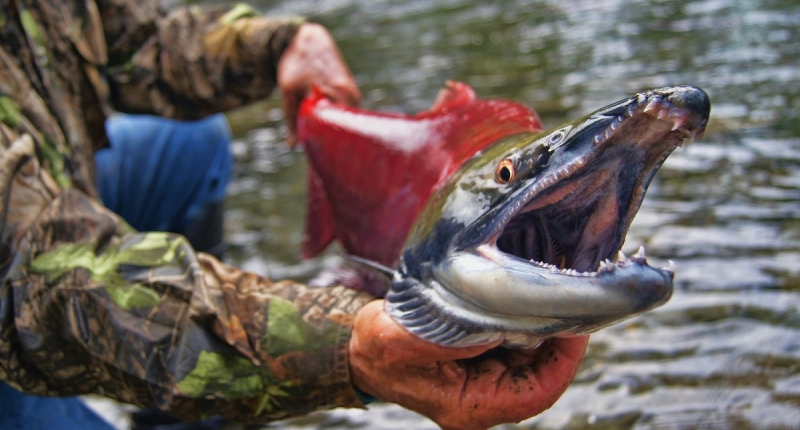Putting the Power of Salmon Knowledge in the Hands of Alaskans

Access to data and research about Alaska’s salmon has never been more important, especially as resource managers and communities need to make decisions to sustain this keystone species amid climate and other fast-moving changes that could threaten its survival.
Now, there is a wealth of such information available at Alaskans’ fingertips, with the launch of Alaska Salmon and People, a first-ever knowledge and data web portal about the millennia-long relationship between people and salmon, including new insights into factors that are supporting or undermining it today. The online resource was designed to increase salmon literacy and public engagement with salmon management and decision-making in the state.
Produced by the State of Alaska’s Salmon and People (SASAP) project, the website contains the most comprehensive collection of accurate and relevant information about Alaska’s salmon and salmon-dependent people. It uniquely aggregates western science and Indigenous knowledge with the aim of making salmon decision-making more inclusive and equitable.
The SASAP project is co-led by NCEAS and Anchorage-based Nautilus Impact Investing, and it was funded by the Gordon and Betty Moore Foundation.
“The information available will help Alaskans better understand the evolution and interdependence of salmon and people systems, so they can better contribute to future decision-making about salmon management,” said the SASAP project’s co-principal investigator Ian Dutton, who formerly led Nautilus Impact Investing.
Salmon are not just ecologically important in Alaska, they also underpin Alaskans’ economy, culture, and identity. The information available through the website mirrors their multifaceted significance.
Examples of the kind of information people will find include over 100 datasets about biological, sociocultural, economic, and governmental trends and insights; in-depth narratives and data visualizations about the issues faced by salmon and people in the state’s major salmon regions; and a historical essay that sheds light on the deep relationship Alaskans have with salmon.
“Alaskans remain extraordinarily connected to salmon, but they are not well connected to the science and data that informs the management decisions that impact their lives,” said Peter Westley, one of the lead scientists and a professor of salmon ecology at the University of Alaska Fairbanks. “A key goal of [the project] has been to level the playing field and give access to salmon-related data to all.”
Westley hopes that by better connecting Alaskans with salmon science and data, they can feel more empowered to be active participants in decision-making.
Over 100 experts from Alaska and beyond collaborated through the SASAP project to synthesize fundamental and current understandings about salmon that are important for sustainable management. Major project partners included the Alaska Department and Fish and Game, the University of Alaska, and representatives from tribes, nonprofits, businesses, and other academic and governmental institutions.
